Name HMS Scylla Laid down 17 May 1967 Launched 8 August 1968 Weight 2,500 tons Builder HMNB Devonport | Decommissioned December 1993 Construction started 17 May 1967 Length 113 m Displacement 2.5 million kg Commissioned 12 February 1970 | |
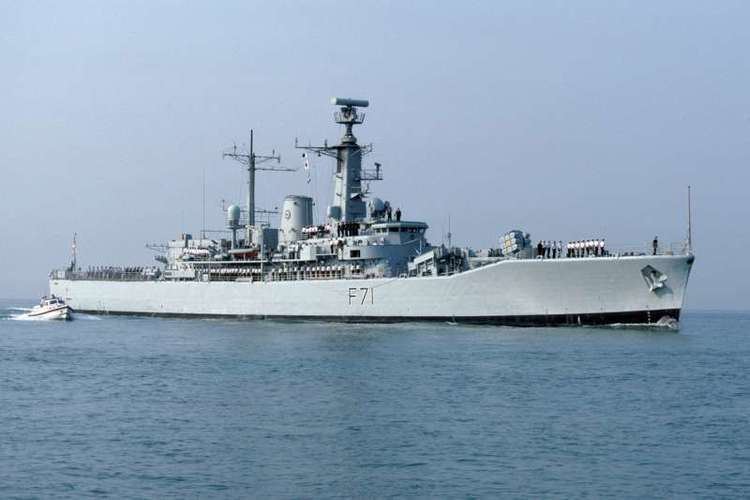 | ||
Fate Sunk as an artificial reef on 27 March 2004 | ||
HMS Scylla (F71) was a Leander-class frigate of the Royal Navy. She was built at Devonport Royal Dockyard, the last RN frigate to be built there as of 2016. Scylla was commissioned in 1970, taken out of service in 1993 in accordance with Options for Change, and sunk as an artificial reef in 2004.
Contents
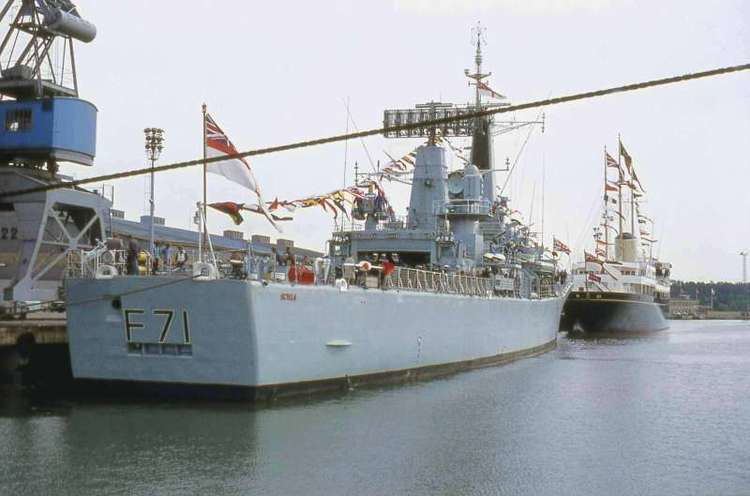
Construction
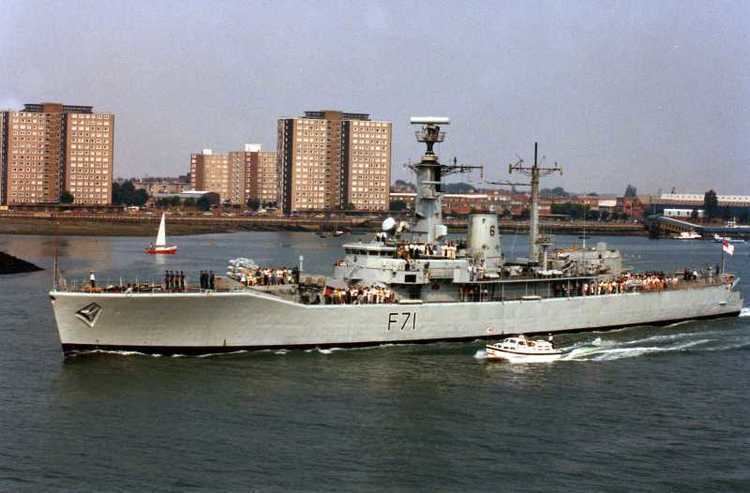
In early 1966, the British Admiralty ordered Scylla, a "Broad-Beam" Leander-class frigate, from Devonport Dockyard, at a cost of £6,600,000. Scylla was laid down on 17 May 1967, launched on 8 August 1968 and commissioned on 14 February 1970, receiving the pennant number F71.
1970s
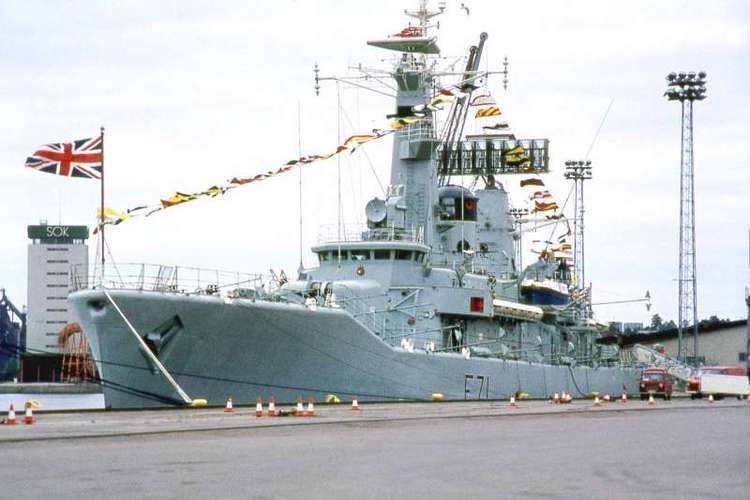
On 22 January 1973, Scylla collided with the Torpoint ferry, one of three separate collisions involving four warships on the same day. Scyllas' collision had occurred while on sea trials following a refit. While Scylla resumed her journey, the ferry sustained a three-foot gash at the bows. A court martial in May reprimanded Scylla's commanding officer, Captain Peter Sutton. In May, Scylla was deployed with other frigates to support the Royal Navy's operations against Iceland during the Second Cod War. The frigate conducted patrols to counter Icelandic coast guard ships targeting fishing vessels. On 1 June, the Icelandic gunboat Aegir collided with Scylla, the first such incident to occur during the fishing dispute.
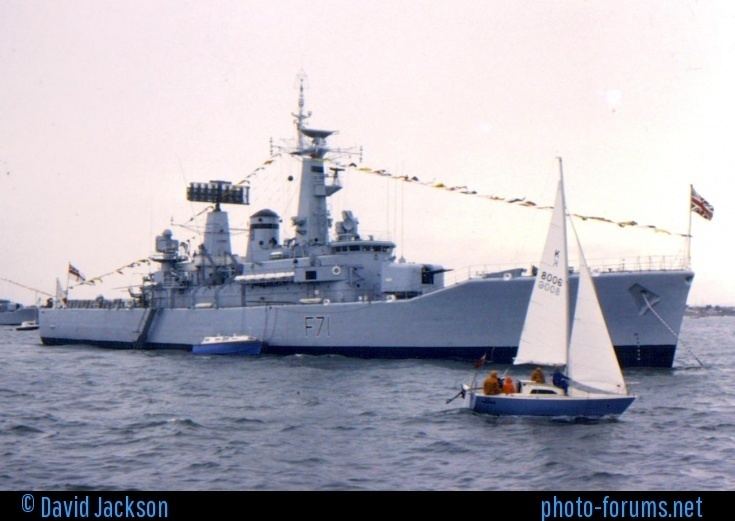
Fishing relations with Iceland deteriorated further in 1975, and the dispute escalated into the Third Cod War. From February 1976, Scylla began operating in support of British fishing trawlers. In May, Scylla provided the escort to the royal yacht Britannia during Queen Elizabeth II's state visit to Finland. Scylla attended At the Spithead Fleet Review, held in honour of Queen Elizabeth II's Silver Jubilee. During that review Scylla was situated between Berwick and sister-ship Euryalus.
1980s
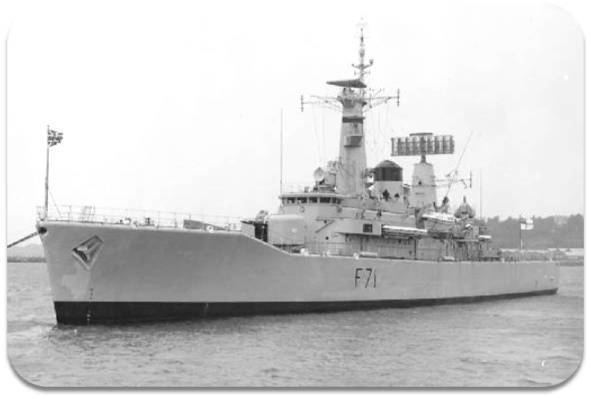
In 1980, Scylla provided support when Cayman Brac, part of the Cayman Islands, was struck by a powerful hurricane. Scylla went into refit in 1980, to provision the frigate with Type 2016 sonar, Exocet and Sea Wolf missile launchers, and a Westland Lynx helicopter. The refit lasted four years, and cost £79,692,000, rendering the frigate unavailable for service in the Falklands. After being recommissioned, Scylla acted as guard ship for the West Indies and patrolled the Persian Gulf as part of Armilla Patrol.. While on Armilla Patrol in late December 1987, Scylla and the USS Elrod twice intervened after two ships, the Korean Hyundai No 7 and British Eastern Power, were targeted by Iranian gunships. After the Korean vessel had been attacked south of Abu Musa Island, Scylla's crew launched the frigate's Lynx helicopter and evacuated some of the ship's crew.
1990s

By 1993, Scylla had become the last representative of her class in active service. The frigate's last deployment came that year when she deployed to the South Atlantic. By then she was showing her age, and it had become difficult for the ship's engineers to maintain. Scylla suffered steering problems while on patrol and collided with the accompanying tanker RFA Gold Rover. While Scylla suffered only superficial damage, Gold Rover had to have repairs for hull damage. Scylla was decommissioned in December 1993. In 1992, Scylla, with the commanding officer, officers and members of the ship's company in attendance, was granted the Freedom of the City of Aberdeen.
Sinking and use as a dive site
After Sirius was torpedoed by the submarine Spartan as a target-ship in 1998, Scylla remained as the sole surviving Leander in the United Kingdom. She lay in a state of disrepair for ten years until 27 March 2004, when the frigate was sunk off Whitsand Bay, Cornwall, to form the first such artificial reef in Europe. Her last commanding officer, Captain Mike Booth, and former crew members were present during the sinking. Daniel Green, a keen diver and student of a local school who won a BBC competition to sink the ship, and David Bellamy OBE, had the liberty of pressing the plunger to detonate the ship. The ship was 'planted' on a 24-metre (79-foot) sandy seabed at 50°19.655′N 4°15.162′W approximately 500m from the wreck of the Liberty ship James Eagan Layne, which has been a popular dive site for many years.
A lot of work was done to ensure the ship was safe and easy to explore inside, such as cleaning the oil from the hull to prevent marine contamination, and as expected, she has become a very popular dive site, situated some 40 minutes by boat from Plymouth. The bridge, rear helicopter bay and deck and the side passages are all visible. Additionally there were penetration dives possible, which had all been made safe for diving until a 2014 survey of the site suggested penetration dive operations be suspended.
In August 2006 a team of marine biologists from the National Marine Aquarium and simulation experts from the University of Birmingham conducted a dive with a Videoray ROV onto the wreck of the Scylla. The dive lasted just over an hour, with the main purpose being to investigate the growth of marine life on the wreck and to collect data for a unique artificial life and serious game project, the Virtual Scylla addressing interactive educational tools for teaching climate change and ocean awareness.
Since then there has been a number of deaths amongst amateur divers visiting the wreck. There are fears that the continuing deposition close to the wreck of dredged waste from the Tamar estuary has led to large quantities of silt spreading through the ship and frequently mixing with the moving water reducing visibility, thereby preventing divers from finding their way out before their air supply diminishes.
The sinking of Scylla has benefited Devon and Cornwall's economy, with a large increase in visitor numbers to the National Marine Aquarium and local diving schools reporting a large increase in divers wanting to experience the wreck.
